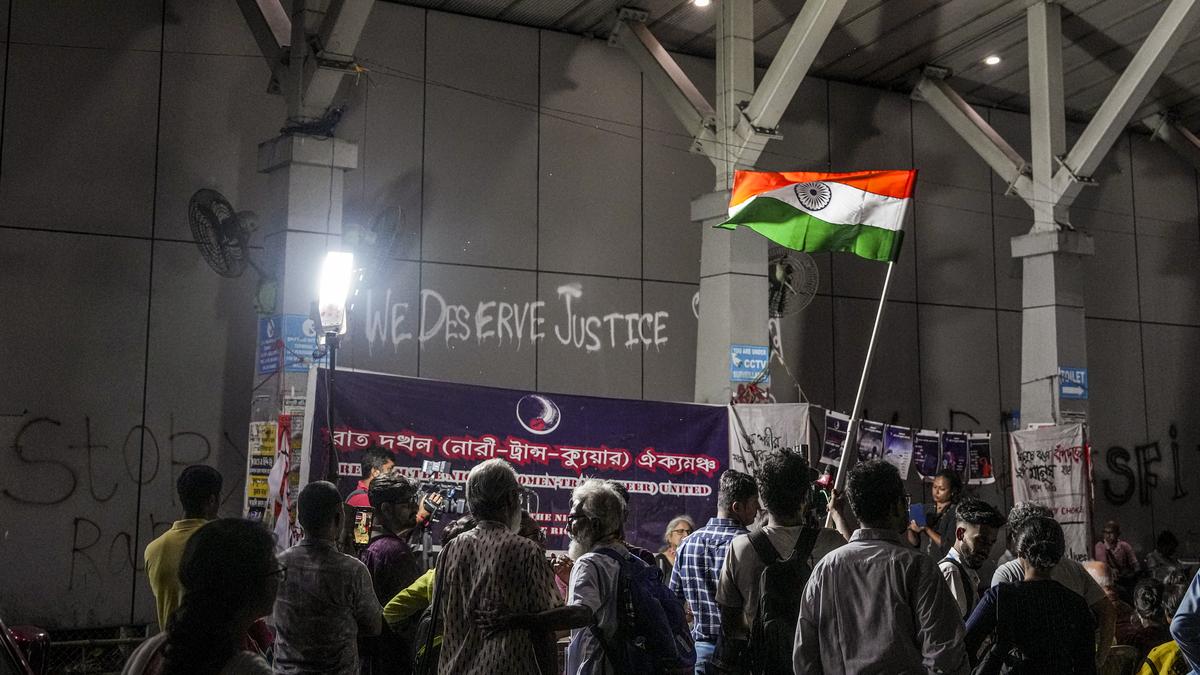West Bengal Chief Minister Mamata Banerjee’s recent remarks amid public outrage over an alleged gang rape in Durgapur have drawn sharp criticism from the Opposition and citizens alike. The incident has once again reignited concerns over women’s safety and the lack of accountability in the State.
The recent crime, in which the victim is a medical student from Odisha, has occurred barely a year after protests erupted over the rape and murder of a doctor at Kolkata’s R.G. Kar Medical College.
Last year, the State government issued a set of guidelines that included a proposal to minimise night duty for women doctors. It was later withdrawn after being flagged before the Supreme Court.
This time, speaking to the media, Ms. Banerjee, after expressing shock over the alleged gang rape, said that private medical colleges must take greater responsibility for their students and that students, particularly girls, should not be allowed to go out at night.
She added, “In Bengal, we have zero tolerance for such crimes, and I appeal to the boys and girls who come to study here not to venture out at night.” Later, she claimed that her comments had been “deliberately distorted.”

Despite Ms. Banerjee’s stated commitment to not tolerating such crimes, data show limited progress on that front. Data show consistently low conviction rates and high pendency of cases of crimes against women in the State.
West Bengal has reported more than 30,000 cases of crimes against women every year since 2018, consistently ranking among the top four States with the highest number of such cases.
The chart below shows West Bengal’s ranking among all States under multiple crime categories related to crimes against women (2018-2023).
Between 2021 and 2023, the State recorded the highest number of cases in the country under the categories of “acid attack” and “attempt to acid attack” on women. The State also ranked second in incidents reported under “attempt to rape,” a trend that has remained consistent since 2019.
Between 2018 and 2023, West Bengal was also one of the three states to record the highest number of cases under “cruelty by husband or his relatives,” following Rajasthan and Uttar Pradesh.

Put together, it is one of the top five States that have recorded the highest number of cases under multiple crime categories related to offences against women between 2018 and 2023, as shown in the chart above. In parallel with such a high caseload, data also show that West Bengal’s conviction rate for crimes against women is among the lowest in the country.
Between 2017 and 2023, West Bengal’s conviction rate for crimes against women has remained abysmally low, averaging around 5%.
The chart below shows conviction rate for crimes against women in West Bengal and its rank among all States.
Only in 2022 did it climb to 8.9%, indicating that convictions occur in just a fraction of the cases that reach court.
A State-wise analysis of conviction rates in this category shows that West Bengal is among the poorest performers. The State ranked 35th out of 36 in conviction rates for cases of crimes against women in 2023.
Consequently, the number of cases of crimes against women that ended in acquittals rose sharply from fewer than 8,000 in previous years to over 19,000 in 2023, the highest among all States that year.
The chart below shows the number of cases of crimes against women in West Bengal that ended in acquittal.
Moreover, around 3.7 lakh cases of crimes against women were pending trial in West Bengal at the end of 2023, the highest among all States. The number of pending cases has risen by 56% between 2017 and 2023.
The chart shows the cases of crimes against women pending trial in West Bengal.
Data clearly show that when it comes to crimes against women, West Bengal recorded the lowest conviction rate in the country, the highest number of acquittals, and the largest backlog of pending cases, collectively reflecting weak action against such crimes.
Source: The data for the charts were sourced from NCRB reports (2017-2023)
Published – October 17, 2025 07:00 am IST


